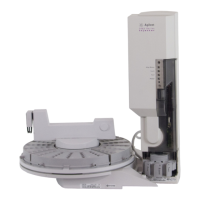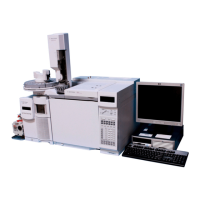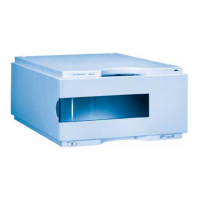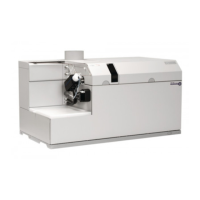Theory 7
Agilent Nano Indenter G200 User’s Guide 7-5
ß is a constant that depends only on the geometry of the indenter.
Figure 7-2 on page 7-4 is founded in elastic contact theory and holds for
any indenter that can be described as a body of revolution of a smooth
function. Because the equation was derived for an axisymmetric
indenter, it formally applies to only circular contacts, and ß = 1.
However, it has been shown that the equation works well even when the
geometry is not axisymmetric, provided that different values of ß are
used. For indenters with square cross-sections like the Vickers pyramid,
ß = 1.012; for triangular cross-sections like the Berkovich and the
cube-corner indenters, ß = 1.034.
Elastic Modulus of Test Material
The elastic modulus (E) of the test material is calculated using the
expression:
(7)
Tip Materials Parameters
v is the Poisson’s ratio for the test material. E
i
and v
i
are the elastic
modulus and Poisson’s ratio, respectively, of the indenter.
For diamond, the elastic constants E
i
= 1141 GPa and v
i
= 0.07 are used.
While it may seem counterintuitive that one must know the Poisson’s
ratio of the material in order to compute its modulus, even a rough
estimate, for example, v = 0.25 ±0.1, produces only about a 5
%
uncertainty in the calculated value of E for most materials.
1
E
r
-----
1 v
2
–
E
-------------------
1 v
i
2
–
E
i
-------------------+=

